Valve Index impressions: An eye-opening headset that pushes enthusiast VR further - sholessylawass
Until about six months agone, I would've said the HTC Vive was Valve's virtual realism headset. It wasn't, of course—merely the product of a dependent partnership. Merely with the VR market seemingly divided between Optic on one face and Valve on the other, the Vive naturally became the face of SteamVR and everything "Not Oculus."
At present Valve has its own headset though: the $999 Valve Indicator. Why Valve struck exterior on its personal, we may never know, but either way the Index is now ipso facto the new face of SteamVR—and it finally ushers Valve's infamous "Brass knucks" controllers to market after years of rough-looking prototypes.
It's tranquillise a bit primeval for us to review the Valve Index, only a full kit came in late parting week and I've spent just about time testing it out. Below you'll find my early and still-subject-to-alter thoughts on the Index headset, the Index ("Knuckles") controllers, and the second-generation base stations.
Commitment-phobic
Which I guess brings Pine Tree State to my first point: The Valve Index uses base stations.
I'm injured. PC-settled virtual reality is in a weird spot decent straight off, I think. On the one hand, writing about the Oculus Rift S a a few weeks ago, I said the tailing:
"If you'atomic number 75 hardcore enough just about VR that you favor to hook adequate an expensive gambling PC (and make do with the attendant cable) quite than opt for the less powerful (but self-contained and wireless) Oculus Quest, you'atomic number 75 besides to a greater extent likely to care most blemished controller tracking—and less believable to care about mounting alkali stations to your wall to ensure peak execution."
I stick about that statement. And every bit far as tracking goes, the Vive/Index base Stations are the gold regulation. The original contemporaries was near-flawless. The second gear genesis might really be flawless, with a wider field both horizontally and vertically. They cover an enormous area, and they do information technology well. Thither's not much other to say.
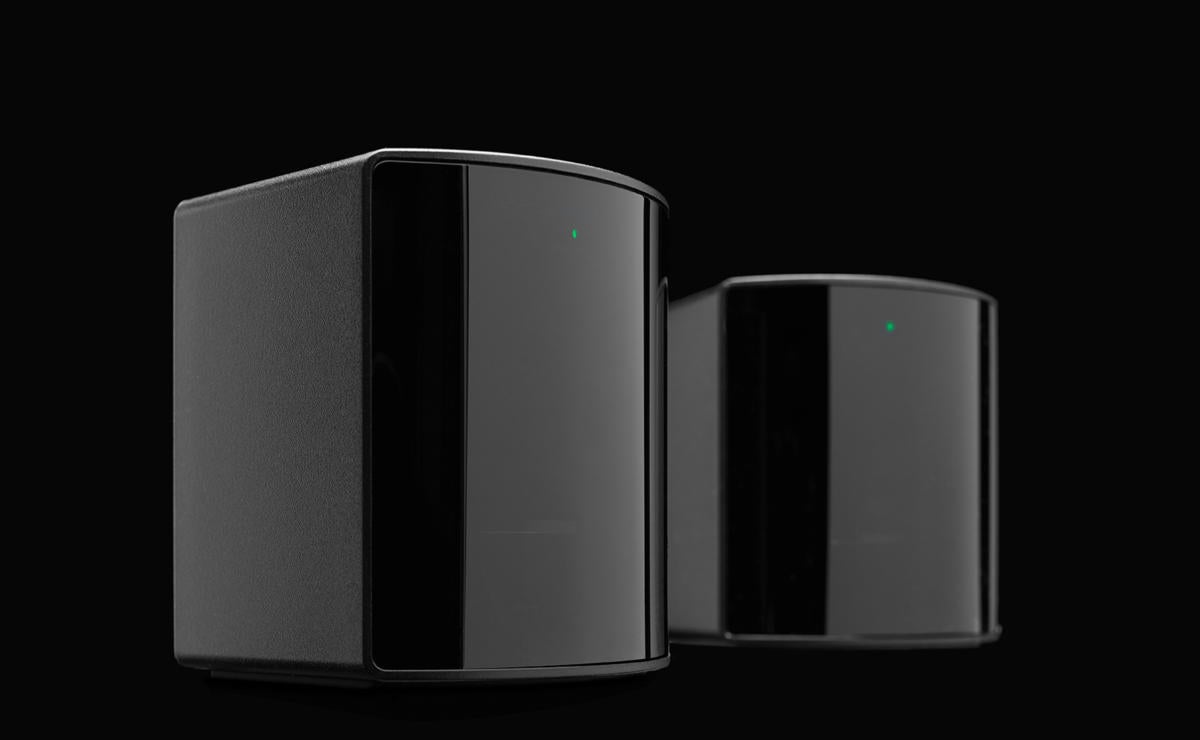 Valve
Valve Base stations are cumbersome though, without doubt about IT. Mounting them on the wall is a commitment. Choosing non to mount them usually proves annoying sooner or later, every bit they either land up in the way or get bumped and need adjusting. I'd also nearly forgotten about the high-inclined whine the dishonourable stations emit, having unplugged my Vive a few months past for Falling ou S testing. That's back now likewise.
I'd still use up the Index's precision over the Rift S's flawed trailing any day—but I do miss the widget of a humbug-and-play headset, and close to price I think the base Stations are the biggest bump into the Indicant. Information technology took me perhaps five proceedings to set up the Break S. Information technology took 15 or 20 minutes to configure the Index, and that didn't include nookie the mounts into the wall. And hell, patc we're making comparisons, the rat's nest of wires I plugged in to get Indicator working made me pause and prize the Oculus Bespeak once more.
Valve Forefinger, the headset
That aforementioned, there are benefits to being plugged in. Keep in mind, these are just our other impressions, simply my early impression was "Holy [Redacted]."
It's all active the field-of-view. 110 degrees has been the modular since the original Oculus Rift dev kit up noncurrent in 2013. We've seen experiments with higher FOVs (the like the bulky Pimax 5K Plus) but none with the appeal of the Rupture and Vive, and thus we've totally gotten used to the feeling of viewing VR through a periscope. Reviewing the Breach S, I even renowned that IT felt like the FOV was more closed off than the first-gen Rift.
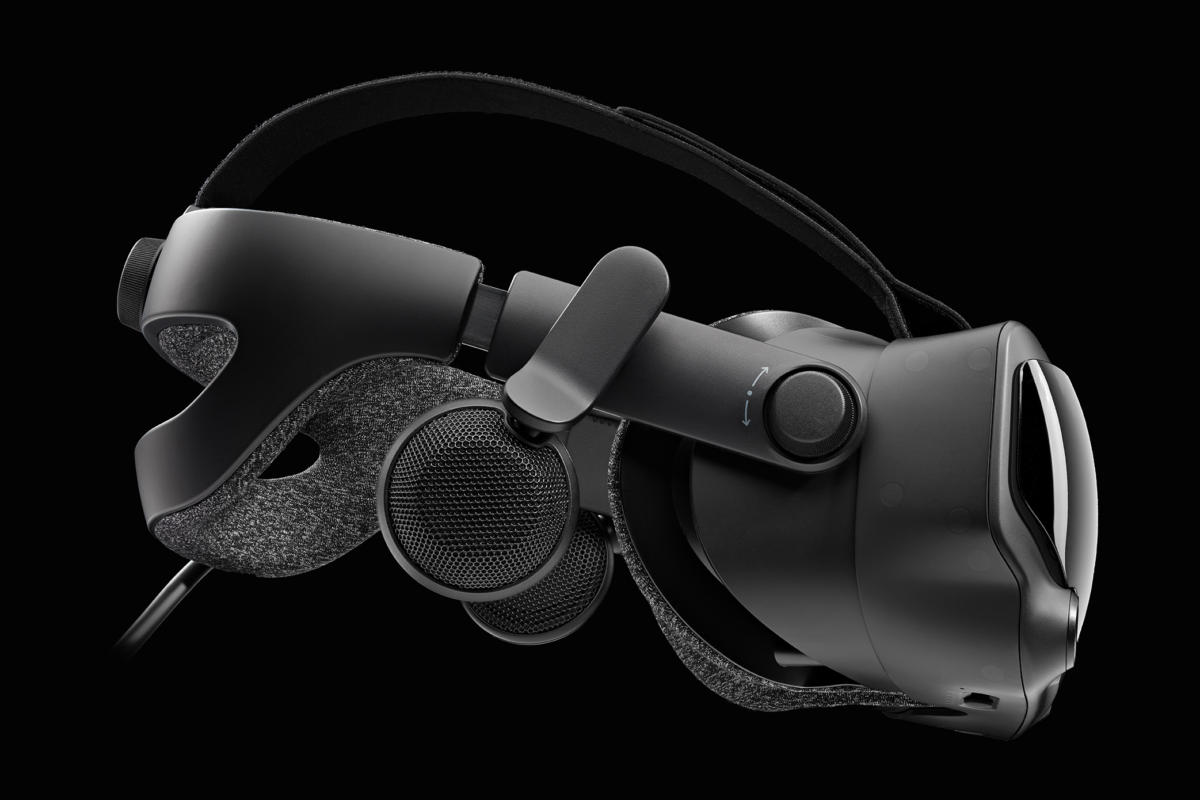 Valve
Valve The Valve Index jumps from 110 degrees to 130ish degrees and it is (heh) eye-opening. I didn't notice the difference and so much horizontally, but vertically it was like removing blinders. Did you know you can usually see the cap and floor while staring straight ahead? Subconsciously, I'd gotten used to not existence able to in VR, big accustomed to heartwarming my whole head up to consult or belt down. The Valve Index makes that spare.
A 20 stage improvement doesn't sound corresponding much perhaps, but already it's made switching back to the Rupture S/Call for/Vive/Vive Affirmative feel claustrophobic.
It looks crisp, to a fault. On newspaper the Vive In favor of and Index have the same 1440×1600 resolution per eye, for a total of 2880×1600. The Index's RGB LCD display has more subpixels than the Vive Pro's AMOLED display though. For the layperson: We flirt with the picture element as being the base unit of measurement for displays, but comparable an atom information technology can make up divided into smaller components, or subpixels. These are the actual colored bands of light that, in combination, allow a pixel to procreate the full spectrum.
All you really motive to know is that RGB LCD screens have a subpixel arrangement that makes fine inside information look cleaner and more consistent. That's important when you're right up next to the screen, American Samoa you are in a VR headset. AMOLED screens have much vivid colours and richer shadows, just RGB LCD gives you a cleanser-sounding effigy at the Saami resolution, which is arguably more beneficial in the long haul.
Short letter that the Eye Break S also pivoted to RGB LCD and hence looks similarly crisp, simply the Power's higher resolution and larger FOV take IT a ill-use further.
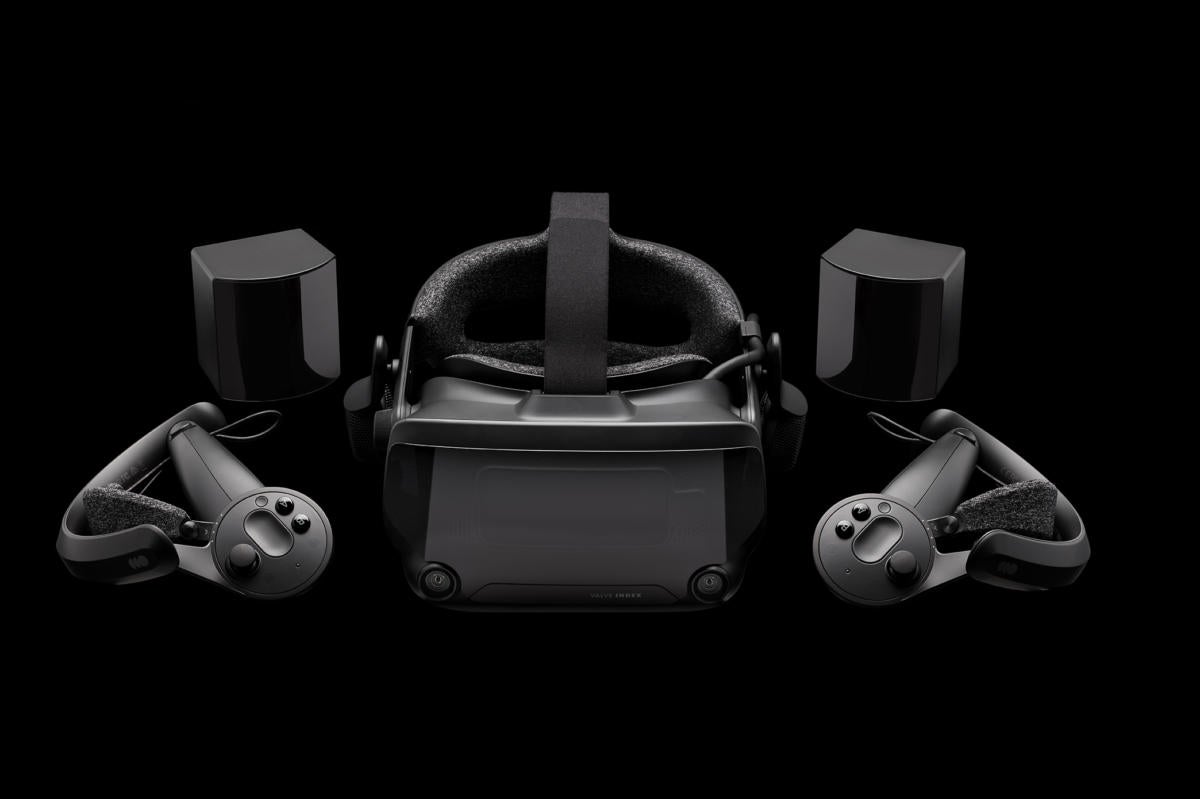 Valve
Valve And there's more, if you give the sack consider IT. Years ago Oculus claimed a 120Hz freshen up rate would be "ideal" for virtual reality, merely well-nig headsets have targeted 90Hz (or less) to aid performance along lower-stop machines. Not the Valve Index. It defaults to 120Hz, with an "experimental" 144Hz mode for high-end machines.
Information technology makes stripped impact on how games are played, but the subconscious difference is enormous—operating theatre at to the lowest degree it was in my case. When I first donned the Valve Index I detected how smooth and snappy the hand-tracking felt, only to realize it was due to the increased frame rate. The difference was especially noticeable because I was coming from the Optic Rift S and Oculus Quest, which run at 80Hz and 72Hz respectively, just even compared to the 90Hz Vive Pro the Index feels fluid.
I am admittedly sensitive to frame order and use a 144Hz monitor at home, so your mileage may depart. I was impressed though.
Knuckle joint up
You're expiration to spend a dispense of time staring at your work force besides. A parcel out. As I aforesaid, the Index also ushers in the official release of Valve's old "Knuckles" prototype controllers, which we first byword back in the halcyon days of 2016, back earlier Oculus had even released its first-gen Touch controllers.
Yeah, it's been a piece.
Anyhow, the "Knuckles" controllers have been redubbed the "Valve Index Controllers," which is way less fun. Regardless, this is the hardware I was most excited to commence my hands on (literally), because information technology's so different.
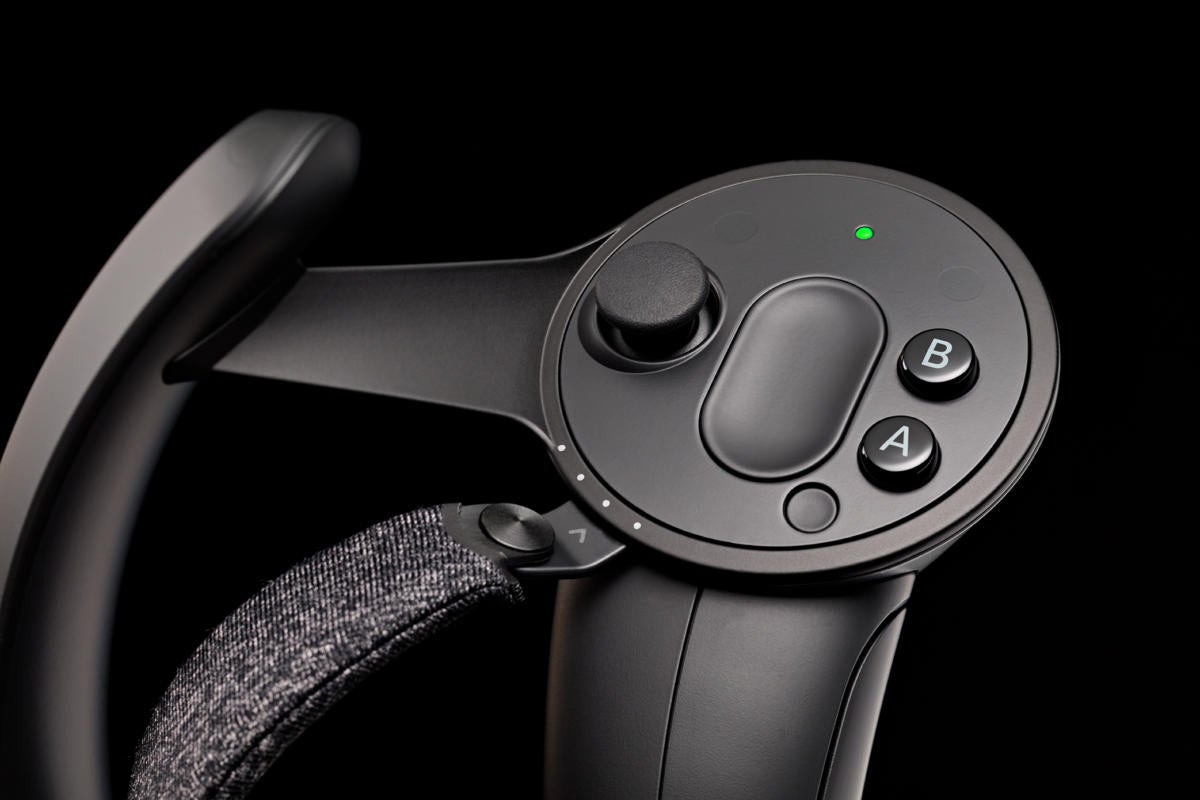 Valve
Valve I'm going to simplify a bit here, just the HTC Vive Wands essentially track three different parts of your hand: Thumb, pointer digit, and deuce-ac-finger grip. Of those, the thumb is the only when one with fine movement reproduction, thanks to the capacitive touchpad. The other fingers were basically "On" operating theater "Off," though the pointer fingerbreadth at to the lowest degree had an analog trigger.
Eye's Touch controllers reinforced on this by devising all buttons electrical phenomenon, and both the trigger and grips analog. Suddenly you could have a hand that was half-open!
Okay, indeed: Valve's Index controllers reportedly role 87 sensors per controller to track all of your fingers. Rather than holding an Index comptroller you put your hand through it, then stiffen a strap across the rachis of your hand to control it in place. Open your hand all the way, the controller stays put.
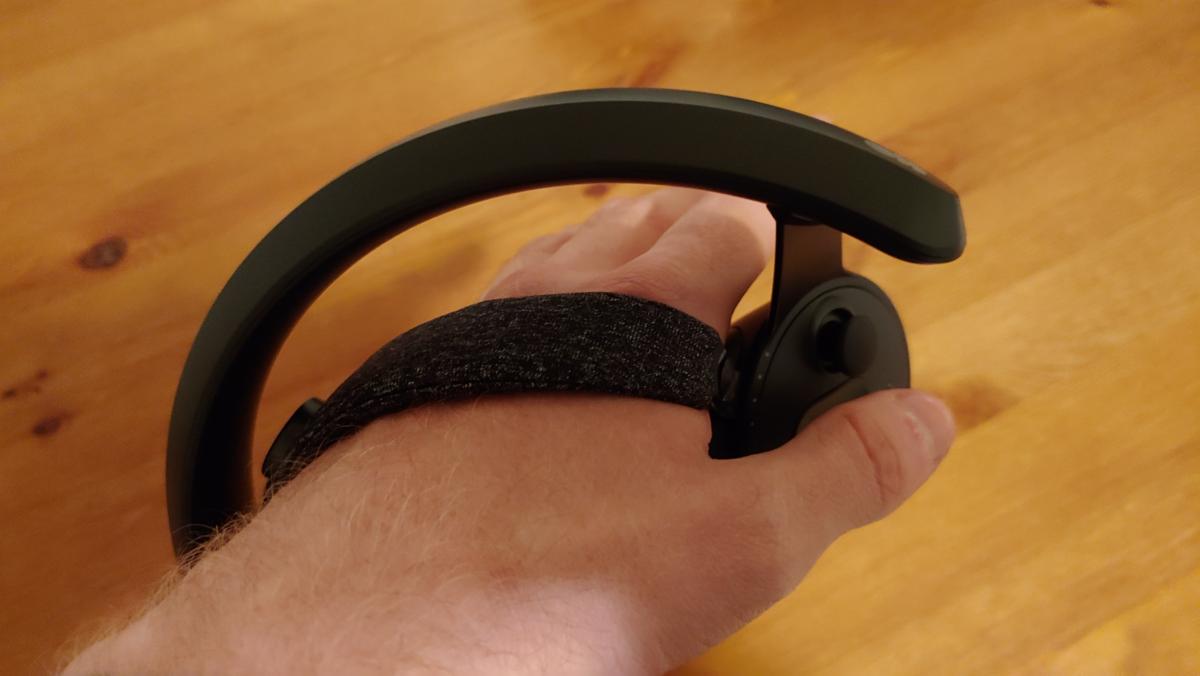 IDG / Hayden Dingman
IDG / Hayden Dingman Like then.
This allows for more realistic item manipulation. To get word an item, you "grab" the Exponent controller. To drop it, you open your hand and "release." On that point are also sensors assembled into basically the entire physical body, so you can close your hand halfway, or point, or ball up just your environ and pinky fingers or whatever and in essence the Index controllers know what you'Re doing. (Check out this Valve blog post for some nifty GIFs.)
There's identical little software support for the Forefinger controllers until now, and I'll need a lot more prison term with them before we doh a priggish review. That said, it's…absorbing. When information technology works it's unconvincing, just I've had plenty of moments where it doesn't rather interpret what my hand's doing and IT's confiscated me out of the have.
I also find myself fighting my instincts. "Open your hand" to cast off an item sound nonrational adequate, and yet I keep not doing it. I think information technology's the weight of the Index controllers that throws me, because of flow from when you let go of of a virtual item the Index controllers stay put. It makes it backbreaking to "drop" them, even knowledgeable they're unwaveringly fast to my hands.
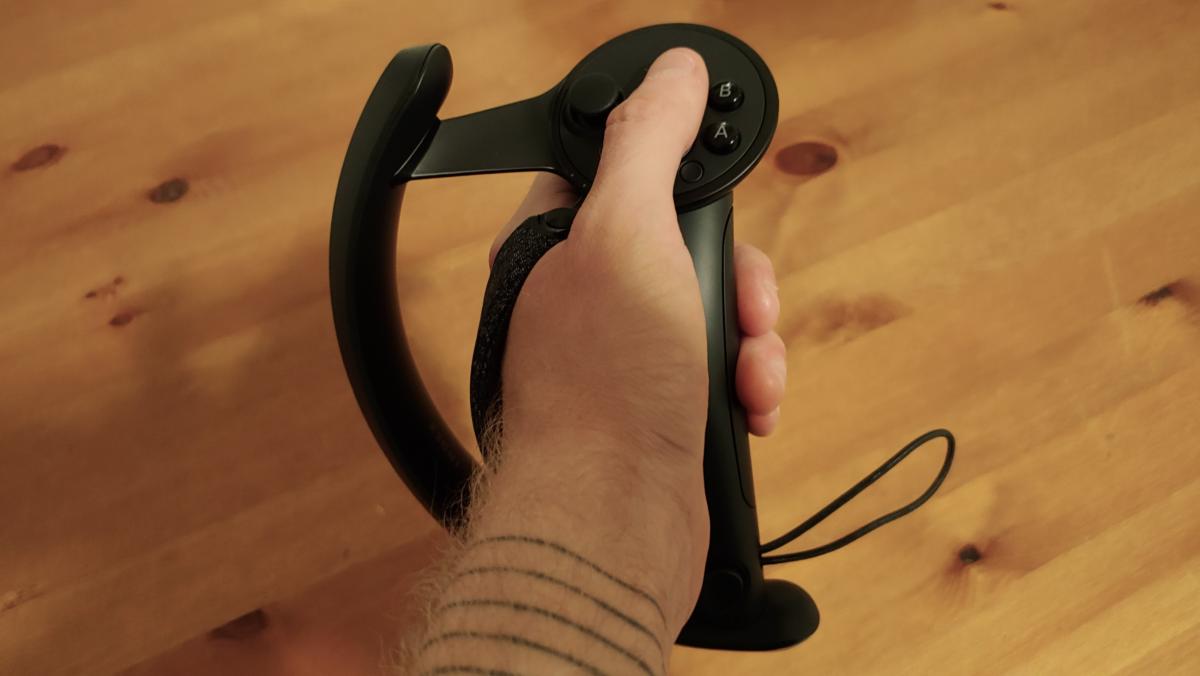 IDG / Hayden Dingman
IDG / Hayden Dingman I'm too finding the new, much-littler touchpads aren't nearly as sensitive nor as smooth arsenic the old Vive Wands, and the analog stick bear is flukey in a lot of package at the import—including SteamVR's menus. Scrolling through my depository library has been more frustrating than I anticipated, and in Google Earth VR the analog stick out's been as likely to do the exact opposite of what I intended As follow instructions.
Standing, I lovemaking certain features, like the variable grip strength—used to great effect in Valve and Cloudhead's Aperture Hand Labs, when you grasp a golem with a handshake thusly firm its arm rips off. That's attractive.
And I'm hoping to a greater extent time is the answer to the rest. That substance more than time on Valve's last to iron out the software kinks, and more prison term on mine to get wont to the whole musical theme. Part of Maine wonders whether Valve transmitted out review units this early for that expressage purpose, because frankly the Index controllers require a change in thought that's comparable in some respects to the doomed Steam Comptroller, a fallal that seemingly everyone bought only…well, let's just now say I don't know anyone who uses one regularly. Information technology doesn't mean nobody is, but we didn't suddenly hand over up analog sticks industry-wide.
 IDG / Hayden Dingman
IDG / Hayden Dingman You can make a peace sign, Oregon (more likely) ruder gestures.
People don't have two decades of VR instinct ingrained in them, but the Power controllers are leaving to take an accommodation period however. I'm looking bold to digging into Holiday Simulator, Arizona Sun, and the rest of the embryonic proofs-of-concept to see if I can make the switch in style.
Bottom line
Before we go, I should probably get along a prompt lightning round. Yes, it's comfortable. Yes, the knob on the side that moves the lenses off from your eyes (for glasses) is the smoothest solution I've seen. Yes, the Valve Index ditches the awkward four-in-peerless control box for a Thomas More smooth solution that lies flush with the cabling. Yes, the speakers hanging down from the side are more immersive than the original Vive/Rift's headphones, but also annoying in shared living spaces. Yes, there's a USB port happening the front, hidden beneath a face plate, for…some reason.
This article's getting long though, and in that location's plenty more to explore. We'll have a formal review in the near future once we've had more time with the Index headset and controllers, so keep an eye out if you want 2,000 more row about subpixel rendition and finger tracking. I know you coiffure, and that's why I love you.
While you're at it, be sure to suss out our Eye Rift S and Oculus Quest reviews. Valve's non shipping the first Index units until June, simply the second contemporaries of VR's already started—especially if you detest wires.
Source: https://www.pcworld.com/article/397502/valve-index-vr-headset-impressions.html
Posted by: sholessylawass.blogspot.com


0 Response to "Valve Index impressions: An eye-opening headset that pushes enthusiast VR further - sholessylawass"
Post a Comment